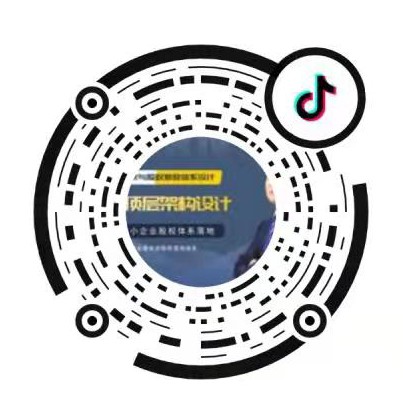
新闻资讯NEWS AND INFORMATION
山东股权:制造企业如何做数字化转型顶层设计架构?
发布时间:2025-10-23 来源:http://www.lushangyun.com/
数字化转型需从战略层面着手考量,循序渐进地渗透至企业的营销、组织、团队以及企业文化等诸多方面。此过程需自上而下地进行精心设计、细致拆解并切实落地。通过开展全面的转型规划与设计工作,制定科学合理的策略,从而有力且高效地推动组织的数字化转型进程。
Digital transformation needs to be considered from a strategic perspective, gradually penetrating into various aspects of the enterprise such as marketing, organization, team, and corporate culture. This process requires careful design, meticulous disassembly, and practical implementation from top to bottom. By carrying out comprehensive transformation planning and design work, developing scientific and reasonable strategies, we can effectively and efficiently promote the digital transformation process of the organization.
下图呈现的是通用的传统企业数字化转型架构图,共包括6个层级:业务驱动的数字化战略、数字化转型目的、数字化转型策略、数字化变革、技术升级以及管理和组织升级。企业管理者可依据该架构图,结合企业的现实状况,开展本公司数字化转型的顶层架构设计工作。
The following figure presents a general traditional enterprise digital transformation architecture diagram, which includes six levels: business driven digital strategy, digital transformation objectives, digital transformation strategy, digital transformation, technology upgrade, and management and organizational upgrade. Enterprise managers can carry out top-level architecture design for their company's digital transformation based on the architecture diagram and the actual situation of the enterprise.
数字化转型顶层设计架构图
Top level design architecture diagram for digital transformation
在当下的数字化时代,企业需围绕用户需求,对产品与服务进行升级迭代,旨在为用户营造更为优质的购物与消费体验。故而,数字化转型的核心要义在于聚焦用户体验,精心打造以实现最佳用户体验为核心的数字化转型战略。
In the current digital age, enterprises need to upgrade and iterate their products and services around user needs, aiming to create a better shopping and consumption experience for users. Therefore, the core essence of digital transformation lies in focusing on user experience and carefully crafting a digital transformation strategy centered on achieving the best user experience.
诸如天猫、京东、腾讯、滴滴等原生数字化企业,无一不是以用户体验为核心,积极推进平台与服务的升级。而苹果、华为、小米等专注于实物产品研发生产的企业,同样围绕用户需求,持续对产品和服务进行优化升级。
Native digital enterprises such as Tmall, JD.com, Tencent, and Didi all prioritize user experience and actively promote platform and service upgrades. Meanwhile, companies such as Apple, Huawei, and Xiaomi, which focus on the research and production of physical products, continue to optimize and upgrade their products and services around user needs.
由此可见,以用户为中心,为用户提供卓越的消费体验,已然成为企业转型的战略导向。
From this, it can be seen that putting users at the center and providing them with excellent consumer experiences has become a strategic direction for enterprise transformation.
企业于数字化转型进程中,不仅要精准把握战略方向,确保不发生偏移,还需明确每个阶段的转型目标。架构图中给出了四点建议:
In the process of digital transformation, enterprises not only need to accurately grasp the strategic direction to ensure no deviation, but also need to clarify the transformation goals for each stage. The architecture diagram provides four suggestions:
(1)智能化运营。借助数据、技术、逻辑、算法等要素,提升企业智能化运营成效,使企业运营更为高效、精准。
(1) Intelligent operation. By leveraging data, technology, logic, algorithms, and other elements, we aim to enhance the effectiveness of intelligent enterprise operations, making them more efficient and precise.
(2)商业模式变革。通过数字化转型,对企业的运营模式、生产模式、盈利模式等进行升级乃至颠覆,重构商业模式。如此,企业方能实现升级换代,在激烈的市场竞争中实现弯道超车。
(2) Business model transformation. Through digital transformation, enterprises can upgrade and even overturn their operational, production, and profit models, and reconstruct their business models. In this way, enterprises can achieve upgrading and replacement, and overtake in the fierce market competition.
(3)重构用户体验。运用数字化技术与大数据算法,对产品研发、企划、生产、营销、物流等全流程的用户体验进行重塑。例如,用户能够进行个性化产品定制;企业可通过互联网平台,让用户全程可视化产品的生产与配送流程,这将极大提升用户体验。又如京东的极速物流配送,为用户提供了高效的配送体验,这也是众多用户选择在京东购物的重要缘由。
(3) Refactoring the user experience. Using digital technology and big data algorithms to reshape the user experience of the entire process of product development, planning, production, marketing, logistics, etc. For example, users can customize personalized products; Enterprises can let users visualize the production and distribution process of products through the Internet platform, which will greatly improve the user experience. For example, JD's high-speed logistics delivery provides users with an efficient delivery experience, which is also an important reason why many users choose to shop on JD.
(4)业绩指数增长。依托数字化技术与数字化平台,凭借庞大的用户基数,数字化突破了时空限制。故而在企业业绩提升方面,能够突破传统企业的线性增长规律,实现指数级的业绩提升。
(4) Performance index growth. Relying on digital technology and platforms, and with a huge user base, digitization has broken through the limitations of time and space. Therefore, in terms of improving corporate performance, it is possible to break through the traditional linear growth law of enterprises and achieve exponential performance improvement.
企业在进行数字化转型策略的制定时,需要从评估、定位、优先级、路线图和实施策略五个方面进行考虑。首先企业需要对所处阶段进行评估,了解当前企业数字化现状及问题,然后进行转型定位,确定当前企业所处的阶段,明确新阶段数字化转型的目标,并确定要推进的数字化转型的工作,根据现状和工作内容,确定落地的优先级,制定实施路线图,并确定合理的推进原则和策略。
When formulating digital transformation strategies, enterprises need to consider five aspects: evaluation, positioning, priority, roadmap, and implementation strategy. Firstly, the enterprise needs to evaluate its current stage, understand the current status and problems of digitalization, and then carry out transformation positioning, determine the current stage of the enterprise, clarify the goals of digital transformation in the new stage, and determine the work of digital transformation to be promoted. Based on the current situation and work content, determine the priority of implementation, develop an implementation roadmap, and determine reasonable promotion principles and strategies.
数字化的转型变革落实到企业中,其实包含从产品研发、设计企划、生产智能制造、智能化营销、智慧物流、极致服务等产品全生命周期的变革,以及企业内部各支持部门和平台的数字化改造。数字化变革包括三大板块:数字化营销、智能化运营、赋能型支持。
The implementation of digital transformation and transformation in enterprises actually includes the transformation of the entire product lifecycle, including product research and development, design and planning, intelligent manufacturing, intelligent marketing, intelligent logistics, and ultimate services, as well as the digital transformation of various support departments and platforms within the enterprise. The digital transformation includes three major sectors: digital marketing, intelligent operation, and empowering support.
(1)数字化营销。涵盖数字化触达、数字化留存、数字化转化以及数字化品牌等用户生命周期的管理。数字化触达,即通过数字化平台和工具,采用数字化矩阵的方式,跟目标客户建立连接,将客户感兴趣的信息推送到潜在客户面前;数字化留存,即通过数字化的工具和平台,建立私域,让用户留存在企业体系内,并且通过对私域的运营,提升转化和复购,进而通过口碑选择和广告拉动,建立数字化的品牌形象;数字化转化,即通过数字化工具和体验的改变,提升用户的转化率和复购率;数字化品牌,即采用数字化的方式构建新的品牌,通过口碑、圈层、裂变的方式,迅速建立品牌形象。
(1) Digital marketing. Covering the management of user lifecycle, including digital outreach, digital retention, digital transformation, and digital branding. Digital outreach refers to establishing connections with target customers through digital platforms and tools, using digital matrices, and pushing information of interest to potential customers; Digital retention refers to establishing a private domain through digital tools and platforms, allowing users to stay within the enterprise system, and through the operation of the private domain, improving conversion and repurchase, and then establishing a digital brand image through word-of-mouth selection and advertising promotion; Digital transformation refers to the use of digital tools and changes in user experience to increase conversion and repeat purchase rates; Digital brand refers to building a new brand through digital means, quickly establishing a brand image through word-of-mouth, circle building, and viral channels.
(2)智能化运营。是指企业内部的运营体系,包括建立端到端的用户体验旅程,基于数字化的供应链体系,让用户参与共创的产品设计和研发,智能制造技术对生产线的升级改造,用户个性化需求的满足和实现,高效的智慧物流配送体系和售后服务体系,这涉及企业内部运营的全方位内容。
(2) Intelligent operation. It refers to the internal operational system of an enterprise, including the establishment of an end-to-end user experience journey, a digital supply chain system that allows users to participate in co creation of product design and research and development, the upgrading and transformation of production lines with intelligent manufacturing technology, the satisfaction and realization of personalized user needs, an efficient intelligent logistics distribution system, and an after-sales service system. This involves the comprehensive content of internal operations of the enterprise.
(3)赋能型支持。即支持部门功能和职能的变化,由原来的闸口管控型职能变更为资源赋能型职能,比如财务部门、技术部门、法务部门、战略部门、人力部门等作为后勤支持赋能部门,给开疆拓土的业务部门提供资源支持,同时通过自动化、智能化的流程体系,纵向支持,横向协同,信息共享,资源共享,提高后勤部门对业务前台的支持效率。人力、财务、法务、技术等部门作为共享服务,为各业务提供支持,节约成本,提高效率。
(3) Empowering support. The support department's functions and functional changes have been transformed from gate control functions to resource empowerment functions. For example, the finance department, technology department, legal department, strategic department, human resources department, etc. are used as logistics support empowerment departments to provide resource support to expanding business departments. At the same time, through an automated and intelligent process system, vertical support, horizontal collaboration, information sharing, and resource sharing, the logistics department's support efficiency for the business front desk is improved. Human resources, finance, legal, technology and other departments serve as shared services to provide support for various businesses, save costs, and improve efficiency.
技术是数字化转型的底座基础。没有数字化技术支持的转型变革,如同在羊肠小道上开车,无法发挥数字化的真正价值。数字化变革,技术是基础,是效率的来源。
Technology is the foundation of digital transformation. Without the support of digital technology, transformation and change are like driving on a narrow path, unable to fully realize the true value of digitization. Digital transformation, technology is the foundation and the source of efficiency.
(1)数据战略和网络安全。数据,作为数字化与智能化的源泉,理应被提升到生产要素的关键高度。未来企业间的竞争,追根溯源,实则是对数据的角逐。唯有实现大数据的有效留存与合理应用,方能为企业构筑核心竞争力筑牢坚实根基。在数字世界的广袤天地里,数据时刻面临着被泄露与滥用的潜在风险。故而,数据安全的重要性愈发凸显。网络安全与数据安全宛如数字化转型的坚固围栏,若围栏不牢,转型之路便难以安稳前行。身为企业管理者,需从顶层制定数据战略,在外部加固网络安全防线,确保数据不流失、不泄露,为企业的数字化转型保驾护航。
(1) Data strategy and network security. Data, as the source of digitization and intelligence, should be elevated to the critical level of production factors. The competition between future enterprises, tracing its origins, is actually a competition for data. Only by achieving effective retention and reasonable application of big data can we build a solid foundation for the core competitiveness of enterprises. In the vast world of the digital world, data is constantly facing potential risks of leakage and abuse. Therefore, the importance of data security is becoming increasingly prominent. Network security and data security are like sturdy fences for digital transformation. If the fence is not strong, the path of transformation will be difficult to move forward steadily. As a business manager, it is necessary to develop a data strategy from the top level, strengthen the network security defense line externally, ensure that data is not lost or leaked, and safeguard the digital transformation of the enterprise.
(2)新技术规划和应用。数字化时代技术的发展日新月异,突飞猛进,对于新兴数字技术的理解和应用,对企业管理者来说既是挑战也是责任。只有及时了解技术的发展趋势和最新的技术优势,才可能选择合适的技术来支持企业的数字化转型。对于大数据、人工智能、物联网、区块链、云计算、元宇宙等新技术的特点、发展、趋势、应用,企业管理者要能深刻洞察并合理决策,引入合适的技术,业技融合,让技术充分发挥价值,促进业务的发展和运营效率的提升。
(2) New technology planning and application. The development of technology in the digital age is advancing rapidly, and understanding and applying emerging digital technologies is both a challenge and a responsibility for business managers. Only by timely understanding the development trends and latest technological advantages can suitable technologies be selected to support the digital transformation of enterprises. For the characteristics, development, trends, and applications of new technologies such as big data, artificial intelligence, the Internet of Things, blockchain, cloud computing, and metaverse, enterprise managers should be able to deeply understand and make reasonable decisions, introduce appropriate technologies, integrate industry and technology, fully realize the value of technology, promote business development, and improve operational efficiency.
(3)DevOps敏捷开发交付。在瞬息万变的数字化时代,用户需求随时变化,市场格局随时变化,竞争对手随时变化,数字化时代给企业的窗口期非常短,通常就一两个月的时间,这一两个月的时间有可能就决定一个企业的生死、一个项目的存亡。所以,数字化时代需要敏捷、快速、迭代的开发方式,需要根据前期的市场调研,快速锁定极简的功能需求,尽快开发上线并测试,获得用户反馈后迅速迭代升级,不断跟用户互动、共创,迭代和升级产品功能和体验。
(3) DevOps agile development delivery. In the rapidly changing digital age, user demands are constantly changing, market patterns are constantly changing, and competitors are constantly changing. The window of time for enterprises in the digital age is very short, usually only one or two months, which may determine the life or death of an enterprise or a project. Therefore, in the digital age, agile, fast, and iterative development methods are needed. Based on previous market research, it is necessary to quickly identify minimalist functional requirements, develop and test them as soon as possible, obtain user feedback, and quickly iterate and upgrade product features and experiences through continuous interaction and co creation with users.
(4)数据应用和数据治理。数据是企业生产要素之一,是未来竞争的核心资源,是企业数字化转型的源泉。企业需要建立强大的数据能力,通过对数据的深入挖掘、深刻洞察、广泛应用,充分发挥数据的价值,构建企业的“数据驱动”能力,让企业的运营和决策都基于数据。数据的收集、完善,数据的有效应用,数据安全的把控,数据使用权限的约定,这些都是数据治理的范畴。企业在数字化转型过程中留存大量数据之后,要配套数据治理机制,确保数据有效使用,不泄露、不作恶。数据的应用和治理在很大程度上反映了企业的数字化能力。
(4) Data application and data governance. Data is one of the production factors for enterprises, the core resource for future competition, and the source of digital transformation for enterprises. Enterprises need to establish strong data capabilities, fully leverage the value of data through in-depth mining, profound insights, and extensive applications, and build their "data-driven" capabilities, so that their operations and decisions are based on data. The collection and improvement of data, effective application of data, control of data security, and agreement on data usage permissions are all within the scope of data governance. After retaining a large amount of data in the process of digital transformation, enterprises need to support data governance mechanisms to ensure effective use of data, prevent leakage, and prevent wrongdoing. The application and governance of data largely reflect the digital capabilities of enterprises.
(5)数字化架构和云。数字化时代对系统的性能和功能有极大的要求,既要体验好,还要成本低,因此需要数字化的架构和云服务作为硬件支撑。系统架构的好坏,将影响系统之间的配合效率和数据交互效率。数字化转型之后,很多业务会对系统并发和高峰性能有比较高的要求,这就需要在系统架构方面改进,采用灵活的、分布式的数字化架构,有效实现负载均衡,确保系统性能的稳定;云计算和云服务的使用,对软件、硬件和服务都有极大的帮助,如SaaS(软件即服务)、Paas(平台即服务)、Iaas(基础设施即服务)就是典型的云服务应用,对企业节省成本、提高效率有极大的帮助。
(5) Digital architecture and cloud. The digital age has great requirements for the performance and functionality of systems, requiring both good experience and low cost. Therefore, digital architecture and cloud services are needed as hardware support. The quality of system architecture will affect the efficiency of coordination and data exchange between systems. After digital transformation, many businesses will have high requirements for system concurrency and peak performance, which requires improvements in system architecture, adopting flexible and distributed digital architecture, effectively achieving load balancing, and ensuring stable system performance; The use of cloud computing and cloud services greatly benefits software, hardware, and services, such as SaaS (Software as a Service), PaaS (Platform as a Service), and IaaS (Infrastructure as a Service), which are typical cloud service applications that greatly help enterprises save costs and improve efficiency.
管理和组织是企业运行的血液和骨架,甚至比技术重要,因为这是“道”的层面的内容,而技术偏于“术”。作为管理者,在推动企业数字化转型过程中,不能只盯着技术的升级改造,更需要重视管理思维、管理内容、管理方式和组织形式、组织架构的变革。
Management and organization are the lifeblood and backbone of enterprise operation, even more important than technology, because they are the content of the "Dao" level, while technology leans towards "Shu". As a manager, in promoting the digital transformation of enterprises, we cannot only focus on the upgrading and transformation of technology, but also need to pay attention to the changes in management thinking, management content, management methods, organizational forms, and organizational structure.
(1)管理思维和行为的变革是管理者尤其应该重视的方面,是从内在认知和外在行为带来由内而外的全方位的变革,这对很多传统的企业管理者来说是非常难的。企业管理者多年形成的管理方式、沟通方式、行为方式很难轻易改变,而数字化时代需要弃旧用新,实现新的变革。
(1) The transformation of management thinking and behavior is an aspect that managers should pay special attention to, which brings about comprehensive changes from the inside out through internal cognition and external behavior. This is very difficult for many traditional enterprise managers. The management style, communication style, and behavior style formed by enterprise managers over the years are difficult to easily change, and in the digital age, it is necessary to abandon the old and use the new to achieve new changes.
(2)组织作为企业的骨架,是推动业务进展的重要因素,组织是否符合数字时代的要求,是采用传统的科层制的组织模式,上令下行,还是采用数字化时代平台化、扁平化的组织模式,对企业能否有效把握市场机会至关重要。
(2) As the backbone of an enterprise, organization is an important factor in driving business progress. Whether an organization meets the requirements of the digital age, whether it adopts the traditional hierarchical organizational model with top-down command or adopts the platform based and flat organizational model of the digital age, is crucial for the enterprise to effectively seize market opportunities.
(3)团队和人员技能的迭代升级对企业的数字化转型也非常重要,沿着旧地图找不到新大陆,采用旧知识解决不了新问题。传统企业的管理者和员工需要升级自己的知识结构,采用数字化的思维方式、数字化的知识结构、数字化的行为方式才能更好地应对数字化的挑战。
(3) The iterative upgrading of team and personnel skills is also crucial for the digital transformation of enterprises. Following the old map cannot find a new continent, and using old knowledge cannot solve new problems. Traditional enterprise managers and employees need to upgrade their knowledge structure, adopt digital thinking, knowledge structure, and behavior in order to better cope with digital challenges.
(4)领导力和企业文化也要进行迭代升级,构建非职权的领导力和基于数据的企业文化,让员工更好地表达意见、参与运营,营造自由、开放、共享、透明、用数据说话的企业文化,充分激发年轻人的活力和创造力。
(4) Leadership and corporate culture also need to be iteratively upgraded, building non authoritarian leadership and data-driven corporate culture, allowing employees to better express their opinions and participate in operations, creating a free, open, shared, transparent, and data-driven corporate culture, and fully stimulating the vitality and creativity of young people.
数字化生态系统和合作伙伴,是指企业在推进数字化转型的过程中,需要跟行业、产业上下游企业进行合纵连横,竞合共赢,在这个过程中需要发挥数字化的价值,进行信息、数据、业务的深入合作,搭建生态系统,才能让企业发展得更长久、更稳健。
The digital ecosystem and partners refer to the need for enterprises to collaborate with industries and upstream and downstream enterprises in the process of promoting digital transformation, to achieve win-win cooperation. In this process, it is necessary to leverage the value of digitalization, deepen cooperation in information, data, and business, build an ecosystem, and enable enterprises to develop more sustainably and steadily.
企业管理者要有高维认知,要从顶层进行转型架构设计,要从转型战略、转型目的、转型策略、技术应用、管理变革、组织调整等方面进行全方位的思考,全面推动转型和变革,才能形成适应数字化时代的竞争力和应对数字化时代各种不确定性的能力。
Enterprise managers need to have a high-dimensional understanding, design transformation architecture from the top level, and think comprehensively from the aspects of transformation strategy, transformation purpose, transformation strategy, technology application, management change, organizational adjustment, etc., to comprehensively promote transformation and change, in order to form competitiveness that adapts to the digital age and the ability to cope with various uncertainties in the digital age.
本文由 山东股权 奉献.更多有关的知识请点击 http://www.lushangyun.com/ 真诚的态度.为您提供为全面的服务.更多有关的知识我们将会陆续向大家奉献.敬请期待.
This article is contributed by Shandong Equity For more related knowledge, please click http://www.lushangyun.com/ Sincere attitude To provide you with comprehensive services We will gradually contribute more relevant knowledge to everyone Coming soon.
本站声明
本网站为非营利性网站,旨在宣扬股权知识,交流职业学习心得。网站内部分文章来自其它网站,只做交流学习之用。相应的权力均属于原权 力人,如权利人认为不妥,请来电来函说明,本网站随既停止或使用,谢谢合作! 13698613138
13698613138
微信公众号

扫码获知更多知识

抖音二维码

截屏,微信识别二维码